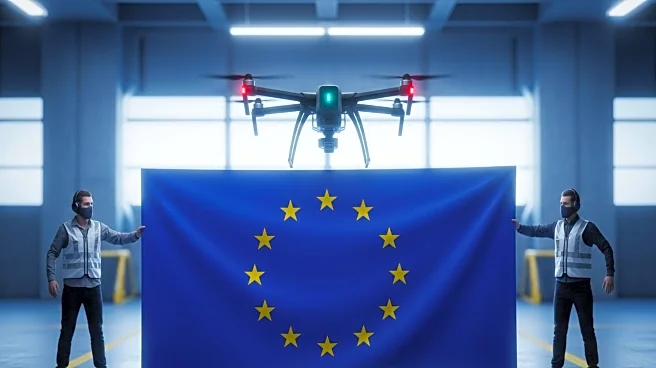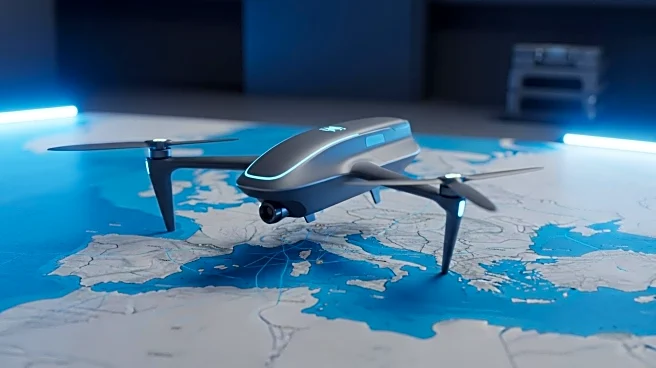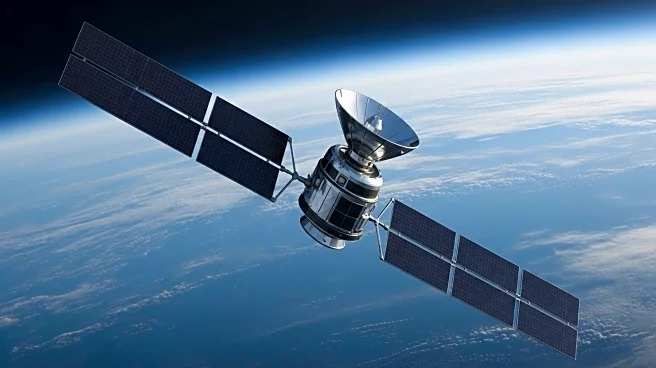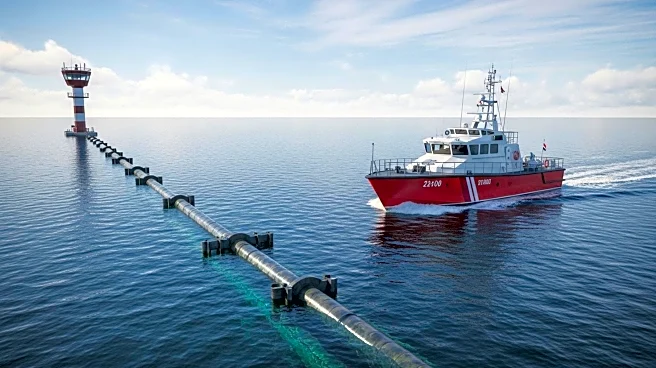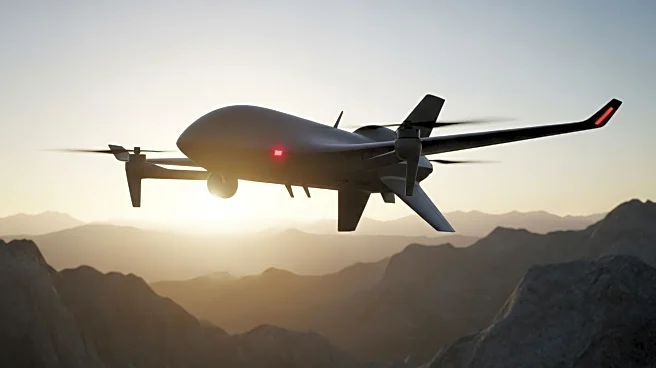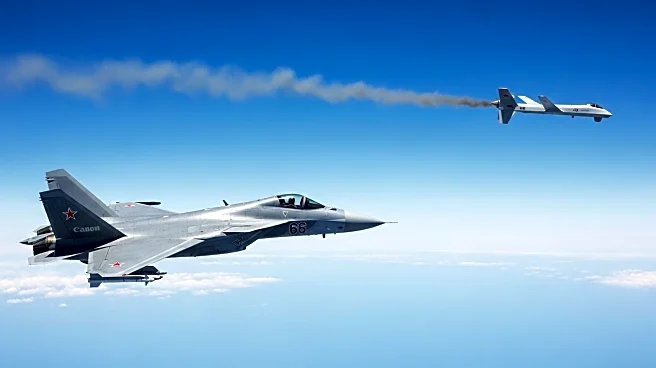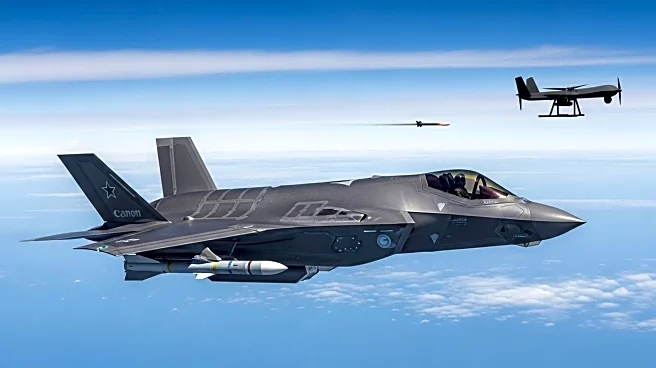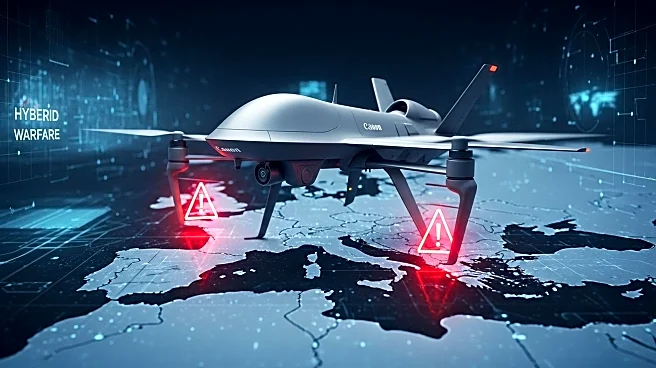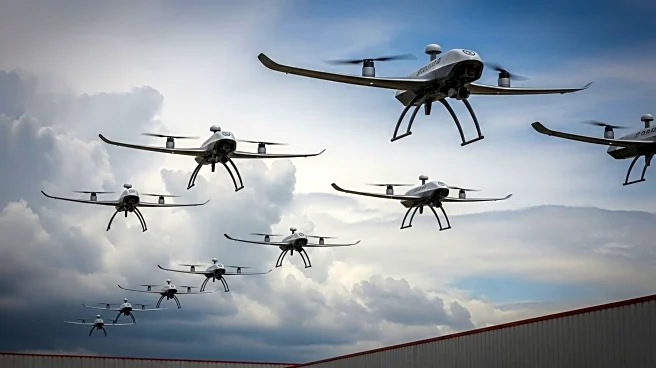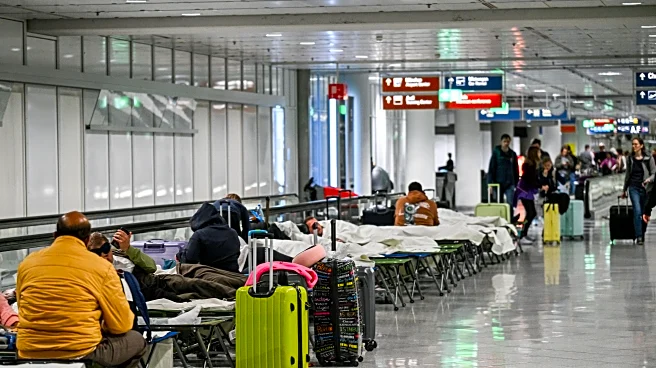What's Happening?
A Royal Netherlands Air and Space Force (RNLASF) F-35A Lightning II Joint Strike Fighter has successfully shot down a Russian unmanned aerial vehicle (UAV) over Poland. This engagement was part of NATO's enhanced Air Policing mission, which aims to protect alliance airspace. The Dutch Ministry of Defence announced the incident on September 30, highlighting the F-35A's role in safeguarding NATO territory. The aircraft, stationed in Poland from September 1 to December 1, has been actively involved in several operations, including the downing of Russian drones. The specific weapon system used in the engagement remains unspecified, though the F-35A is typically equipped with a GAU-22/A 25 mm Gatling gun, AIM-9X Sidewinder missiles, and AIM-120C AMRAAMs for air-to-air combat. The incident marks a significant moment as it is the first known engagement of its kind over NATO territory, likely occurring during a mass incursion of over 20 Russian UAVs into Polish airspace on September 10.
Why It's Important?
This development underscores the heightened tensions between NATO and Russia, particularly in Eastern Europe. The successful interception of a Russian UAV by a NATO member highlights the alliance's commitment to defending its airspace and maintaining regional security. The presence of Dutch F-35A fighters in Poland is a strategic move to deter potential threats and reassure member states of NATO's readiness to respond to incursions. This incident may influence future military deployments and defense strategies within the alliance, as it demonstrates the effectiveness of NATO's air policing capabilities. The engagement also raises concerns about the increasing use of drones in military operations, prompting discussions on counter-drone technologies and defense systems.
What's Next?
NATO may consider bolstering its air defense systems and increasing surveillance flights over Eastern Europe to prevent further incursions. The alliance could also explore enhancing its counter-drone capabilities to address the growing threat posed by unmanned aerial vehicles. Additionally, diplomatic efforts may be intensified to address the underlying tensions with Russia and prevent escalation. Member states might review their defense policies and allocate resources to strengthen air policing missions, ensuring the protection of NATO airspace. The incident could lead to increased collaboration among NATO countries to develop advanced technologies and strategies for air defense.
Beyond the Headlines
The engagement of a Russian UAV by a NATO fighter jet highlights the evolving nature of modern warfare, where drones play a significant role in reconnaissance and combat operations. This incident may prompt ethical and legal discussions regarding the use of drones in military conflicts, including the implications for international law and civilian safety. The increased reliance on drones could lead to a shift in military tactics and strategies, emphasizing the need for robust counter-drone measures. Furthermore, the incident may influence public perception of NATO's military activities and its role in maintaining global security.

